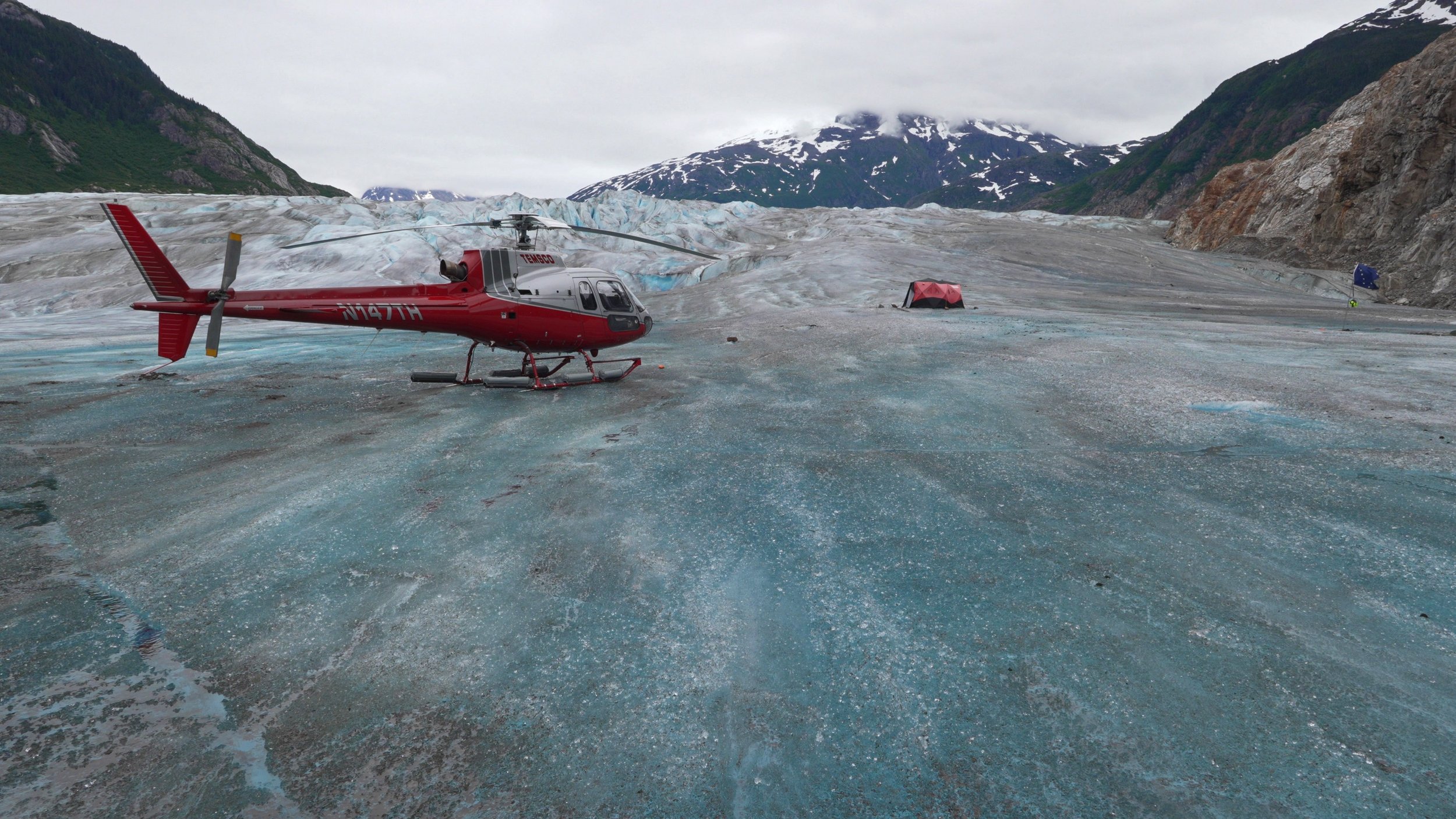Meade Glacier & Global Acceleration of Glacier Melting
Glaciers everywhere are receding at an alarming rate. Equipped with special boots, we walk on the shrinking Meade Glacier in Alaska on the Juneau Icefield, observing its meltwater pools, striking deep-blue ice, and hazardous crevasses. Embark on a captivating journey to the surface of melting glacier with Haswell Travelled's Meade Glacier YouTube video, and learn about the accelerating rate of glacier shrinkage worldwide and the self-reinforcing feedback loop making this happen.
The Juneau Icefield is the 5th largest icefield in North America, straddling the Canadian boarder, covering 1,500 square miles with about 140 glaciers. Meade Glacier is one of 40 large outlet glaciers on the Juneau Icefield. From Skagway we fly with Temsco Helicopters to Meade Glacier on the northwest section of the Icefield. It is an outlet glacier, having a number of other glaciers feeding into it.
The glacier's beauty is undeniable as meltwater streams snaked across its surface, revealing its vibrant blue ice. Blue ice on outlet glaciers like this one can be a thousand years old, formed over time by ice compression high enough to only reflect short blue wavelengths of light. The ice slowly moves. What we are standing on has gradually flowed down the valley from source glaciers much further up. For safety, we followed our guides, and did not wander off, as the surface can quickly become dangerous.
Like many glaciers around the world, it is shrinking each year, experiencing both retreat and thinning of its ice mass. Monitoring of glaciers on the Juneau Icefield have revealed that their rate of shrinkage is accelerating. From 2015 to 2019, these glaciers were losing ice at a rate five times faster than in the 1980s. This trend is consistent with tracking by the World Glacier Monitoring Service, which shows the rate of glacier shrinkage around the globe has increased each decade since the 1970s.
Global warming has undeniably driven glacier shrinkage, but an additional process is amplifying the melting. As glaciers melt, their surfaces darken due to exposed debris and meltwater pools, reducing their ability to reflect sunlight. This darker surface absorbs more heat, which accelerates further melting, creating a feedback loop that intensifies the process. This self-reinforcing cycle is a global concern, as glaciers worldwide are now melting at an ever-increasing pace.
This raises the question of how quickly will glaciers vanish. Many smaller glaciers have already disappeared, and projections suggest that many more could be gone within the next 30 years. A widely cited estimate indicates that up to two-thirds of the world’s glaciers could vanish by the end of this century.
Immerse yourself in the captivating episode of Meade Glacier on the Haswell Travelled YouTube channel. The video is also easily accessible via the website’s USA web page, allowing viewers to explore this enchanting content alongside other fabulous destinations.

